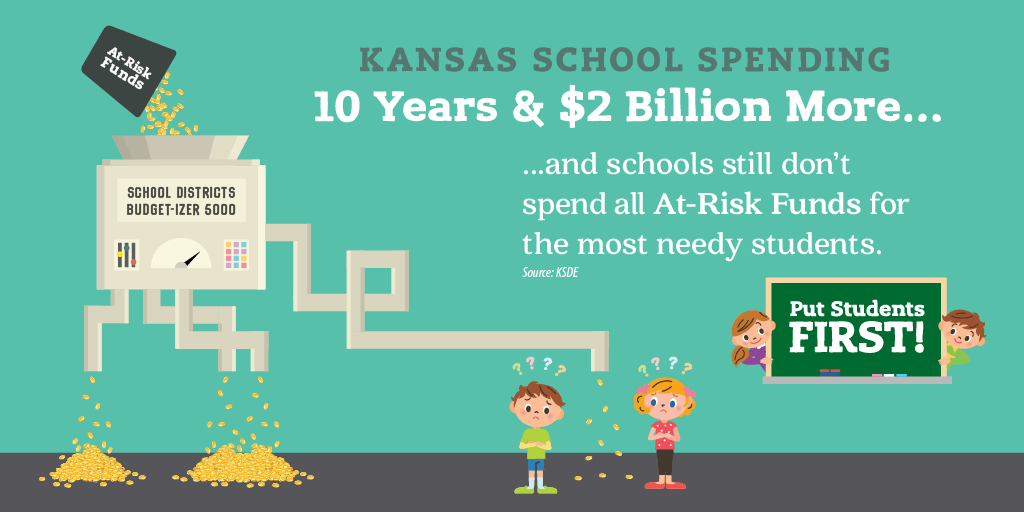The at-risk program began in Kansas in 1992. Its purpose was “to provide at-risk students with additional educational opportunities and instructional services to assist in closing the achievement gap.” In the last 10 years, more than $350 million of the nearly $2 billion increase in education dollars went to at-risk funding, but the program not only failed to close achievement gaps, those gaps are getting worse!
How can that be?
For starters, school districts don’t have to spend at-risk dollars exclusively for the benefit of students who have been deemed “at-risk.” Special categories like additional half-day Kindergarten and the K-3 reading program have redirected at-risk money to the general student population. Furthermore, districts are allowed to pay the same portion of teachers’ salaries as the portion of at-risk students in the entire district, regardless of how much time a teachers spends with at-risk students or the number of at-risk students in a classroom.
Combining that with the fact that districts are not held accountable in any way to a) actually spend the money on those truly at risk, or b) show results that the program improved achievement has created a system in which at-risk dollars have become marbled with other funding to become little more than a supplement to general state aid.
So even legislators’ best intentions of getting increased funding to those students is derailed by a broken system and no real accountability for school districts.





